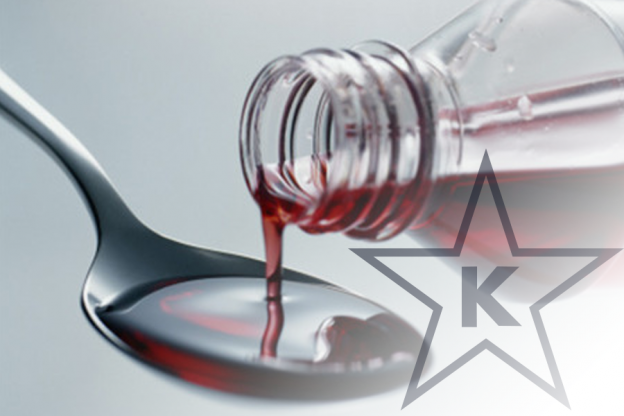
In the world of food ingredients, there is no ingredient as versatile as glycerin. In the world of kosher ingredient sensitivity, there is no kosher-sensitive ingredient that compares to glycerin. Glycerin’s ingredient versatility is not limited to food grade applications. Glycerin is used extensively as a major component in the pharmaceutical and cosmetics industries, as well.
Glycerin is known as a humectant. That means that glycerin helps retain moisture. Therefore, glycerin is a perfect ingredient for the baking industry to keep bakery goods moist and give products a longer shelf-life. Glycerin is sweet and can be used as a substitute for liquid sugar. Glycerin is an excellent solvent and is used as a mainstay for food colors. These properties make glycerin an essential ingredient in a myriad of food applications.
Furthermore, glycerin’s natural properties make it an essential element in pharmaceutical products, as well as health and beauty aids. What is that sweet, syrupy base used in over-the-counter cough medicine? Glycerin. What is a basic ingredient in many mouthwashes and toothpastes? Glycerin. How about soaps and shampoos? You guessed it … glycerin. In fact, one article lists over 1500 uses for glycerin!
In the world of kosher/non-kosher compatible ingredients, glycerin ranks #1 in the sensitivity department. Glycerin can be produced naturally from vegetable or animal sources, or synthetically from petroleum. It can be produced as kosher or treif, and as kosher for year-round use or Kosher L’Pesach.
What is glycerin? How is it derived or produced? What makes it so kosher-sensitive?
Glycerin or glycerol is a term derived from the French word, “glycerin”, or the Greek term, “glykeros”, which means “sweet”. Glycerin is found naturally in the human body, as well as in vegetables and animals. Glycerin is known as a lipid. A lipid is a fat found in humans, animals and vegetables, and glycerin is part of this lipid.
Believe it or not, glycerin was discovered quite by accident in 1799 by a pharmaceutical chemist name Carl Scheele. Scheele combined olive oil with caustic soda under high heat. The result was the creation of new materials. The free fatty acids combined with sodium, creating what is known as “soap stock”, the basic component of soap production. This process of soap making and its byproduct is popularly known as saponification, the method used for the production of soap. The byproduct of this reaction is crude glycerin, which today is more main than a mere by product.
Saponification is not limited to vegetable based products, such as olive, palm or coconut oil. It also can be achieved using lipids such as tallow or lard. The same result of separating animal based triglycerides with caustic soda, will result in animal soapstock and animal-based glycerin.
It is interesting to note that in the world of oil refining, when crude olive or crude vegetable oil requires refining, the first stage of the refining process is known as “neutralization”. Neutralization of the acidity is achieved when caustic soda is combined with the unrefined oil. In this case, the caustic soda removes minimal amounts of free fatty acid that lowers the acidity, but leaves the triglycerides and the glycerin in the olive oil intact. Experts say that the difference between saponification and neutralization depends upon the amount of caustic used plus the amount of heat applied to the oil. No heat plus caustic equals neutralization, and the oil remains intact. High heat and lots of caustic creates saponification, where the glycerin molecule splits off.
Another method used to produce glycerin is known as transesterification, whereby methanol and acetic acid are used as extractives that combine with the lipid to form many components; glycerin is one of the byproducts. This process is popularly known as biodiesel extraction. Depending upon the starter material, whether vegetable or animal, the result will be either kosher or non-kosher biodiesel and kosher and non-kosher glycerin.
Years ago, there was a significant kashrus concern even with vegetable transesterification when the starter material for biodiesel productions from spent vegetable oil from McDonald’s (and other similar sources) would make non-kosher vegetable biodiesel and non-kosher glycerin. Obviously, if this spent oil biodiesel production method became cost-effective then kosher glycerin would be sold at a super premium price, triggering further complications in the kosher glycerin market.
A third method used to produce kosher glycerin is synthetically: using propylene, a petro chemical, as the starter material. The propylene molecule is modified through chlorination and oxidation, which produce a glycerin molecule. This method produces viable kosher synthetic glycerin but is not cost-effective.
As we have seen, glycerin was discovered as the result of an error in 1799, and today glycerin can be produced through many chemical processes. Amazingly, the final result is that the kosher glycerin molecule is the same regardless of the process. It is an incredible gift from the Ribono Shel Olam. Just as we learn of glycerin’s incredible application, we learn of glycerin’s potential kashrus pitfalls. For that reason, kashrus agencies have to be extremely vigilant to make sure kashrus standards are upheld on the production, transportation and storage levels, as well as the end user level, for a spoonful of non-kosher glycerin would be anything but “delightful” and wouldn’t go down so well!

 STAR-D
STAR-D STAR-S
STAR-S